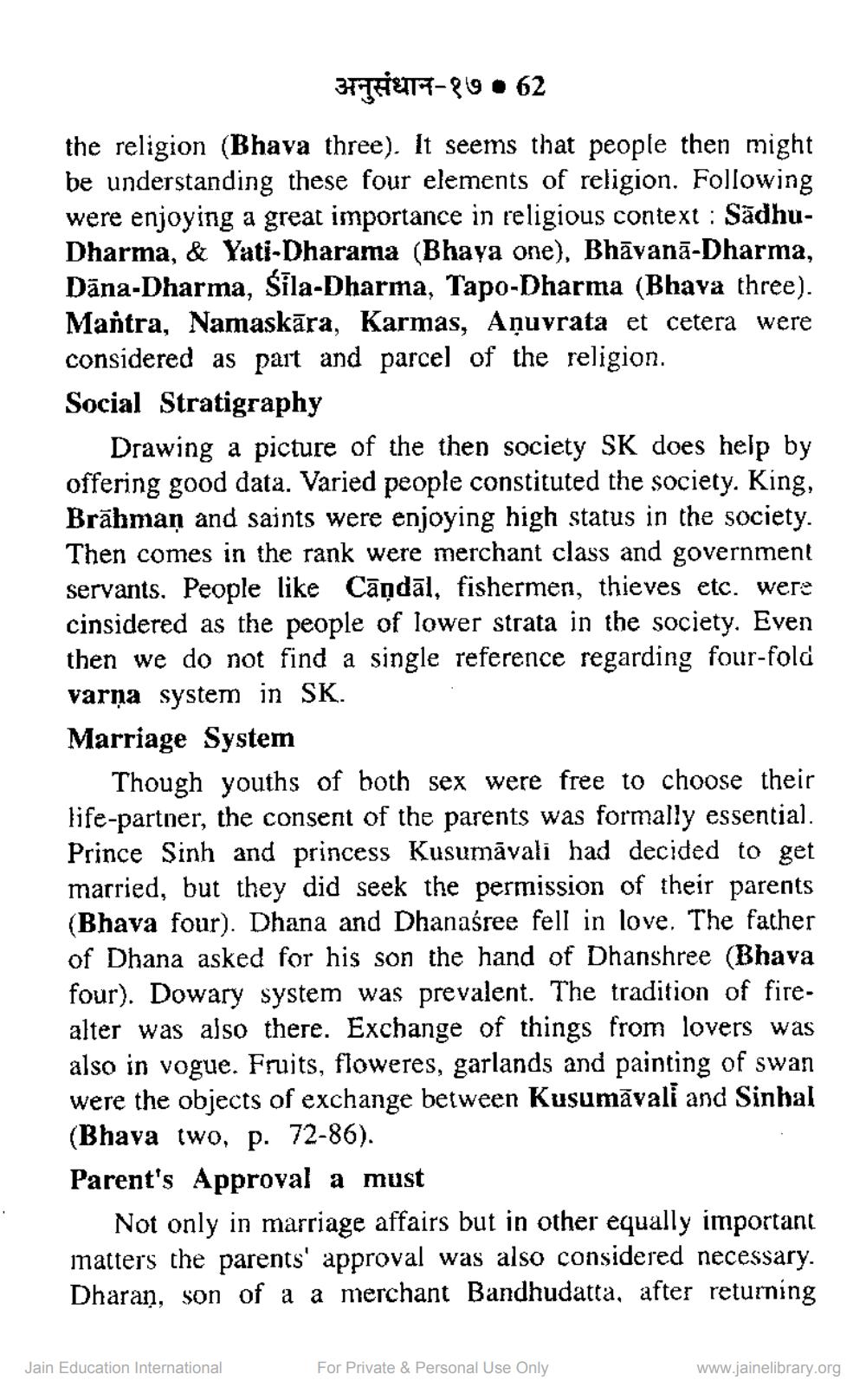________________
TITLET-8962
the religion (Bhava three). It seems that people then might be understanding these four elements of religion. Following were enjoying a great importance in religious context : SädhuDharma, & Yati-Dharama (Bhaya one), Bhāvanā-Dharma, Dāna-Dharma, Sila-Dharma, Tapo-Dharma (Bhava three). Mantra, Namaskāra, Karmas, Aņuvrata et cetera were considered as part and parcel of the religion. Social Stratigraphy
Drawing a picture of the then society SK does help by offering good data. Varied people constituted the society. King, Brāhman and saints were enjoying high status in the society. Then comes in the rank were merchant class and government servants. People like Cāņdāl, fishermen, thieves etc. were cinsidered as the people of lower strata in the society. Even then we do not find a single reference regarding four-fold varņa system in SK. Marriage System
Though youths of both sex were free to choose their life-partner, the consent of the parents was formally essential. Prince Sinh and princess Kusumāvali had decided to get married, but they did seek the permission of their parents (Bhava four). Dhana and Dhanasree fell in love. The father of Dhana asked for his son the hand of Dhanshree (Bhava four). Dowary system was prevalent. The tradition of firealter was also there. Exchange of things from lovers was also in vogue. Fruits, floweres, garlands and painting of swan were the objects of exchange between Kusumavali and Sinhal (Bhava two, p. 72-86). Parent's Approval a must
Not only in marriage affairs but in other equally important matters the parents' approval was also considered necessary. Dharan, son of a a merchant Bandhudatta, after returning
Jain Education International
For Private & Personal Use Only
www.jainelibrary.org




